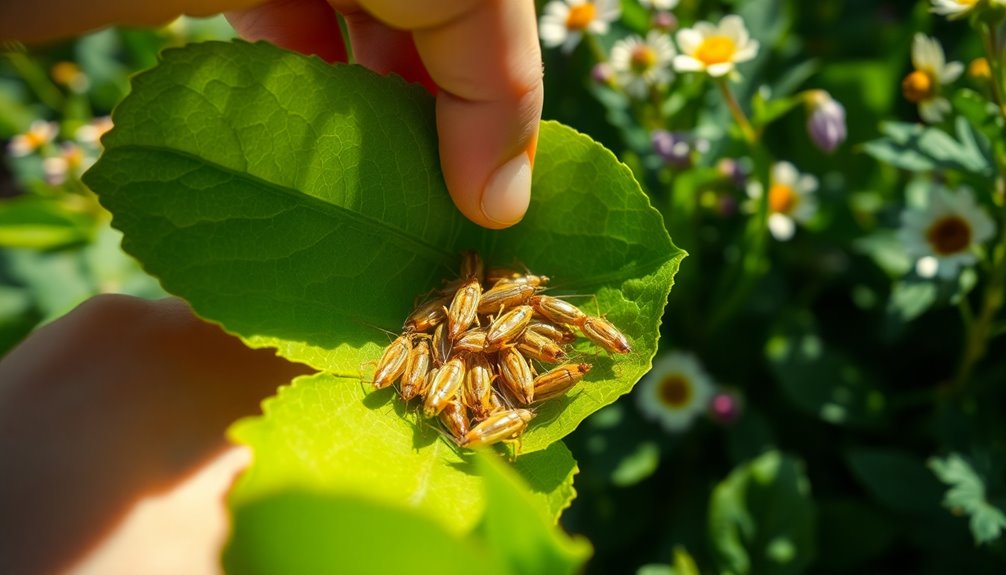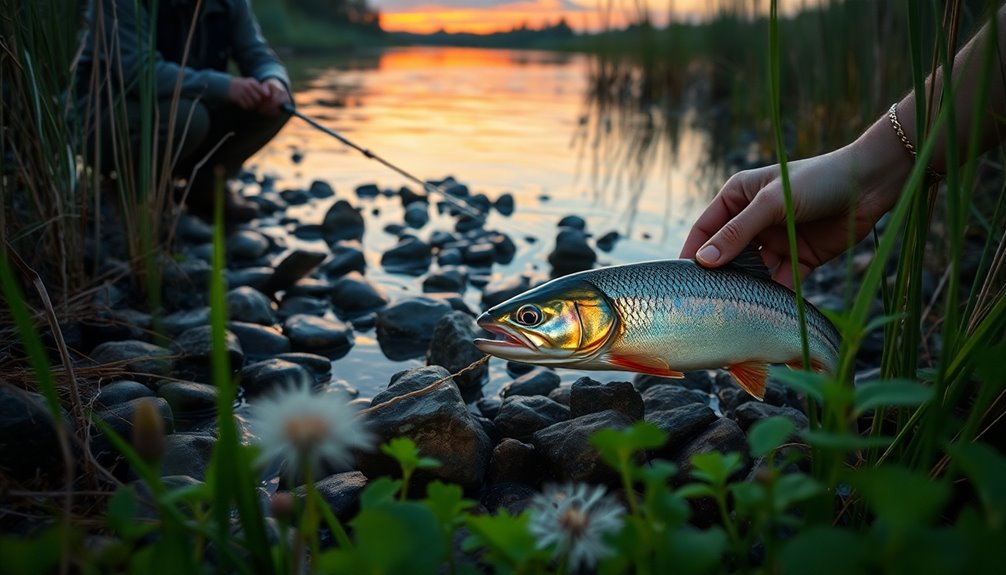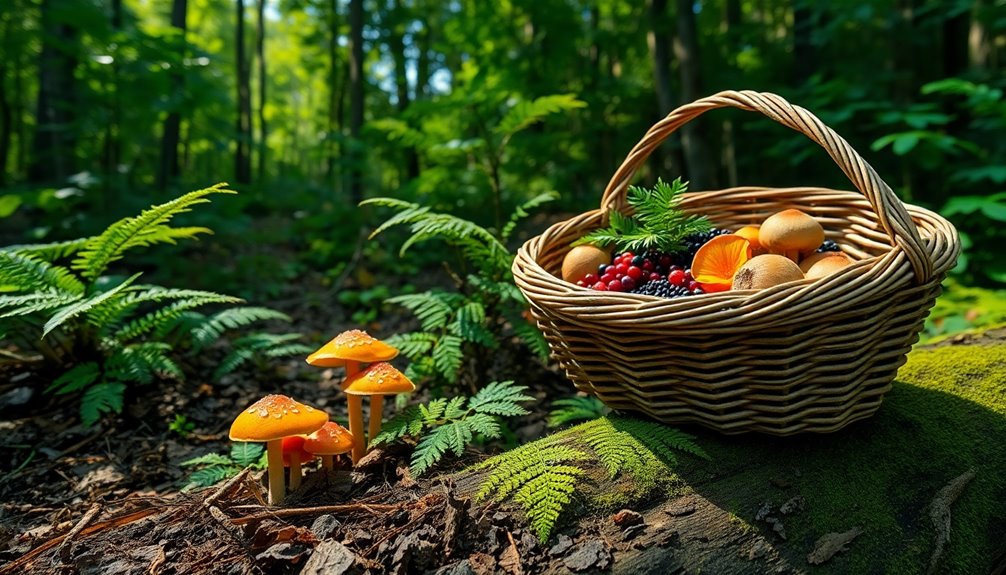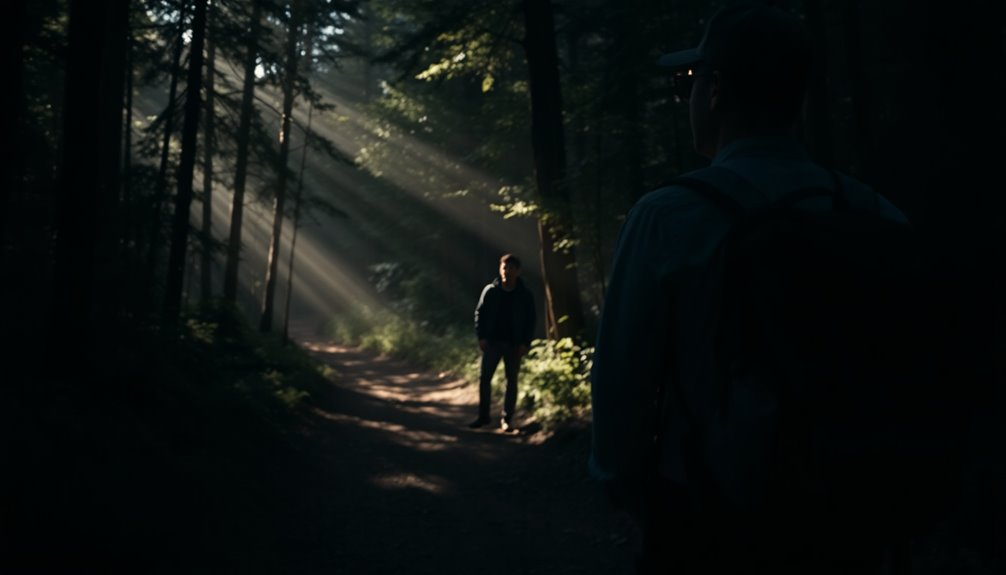You can find food in unexpected places, like your backyard or a local park. Many wild plants are edible, and over 30% of them could boost your nutrition. Don't overlook insects, either; they're a protein powerhouse and packed with essential vitamins. Crafting primitive tools can help you forage more effectively, while fishing and trapping can provide a sustainable food source. Plus, learning preservation techniques keeps your finds safe for later. The world around you is full of food opportunities waiting to be explored, and there's more to uncover that can enhance your survival skills.
Key Takeaways
- Explore urban environments for edible plants like dandelions, purslane, and clover in gardens and parks.
- Check under trees and shrubs for wild berries and nuts, which provide vital nutrients.
- Look for edible insects, such as crickets and ants, which are abundant and high in protein.
- Utilize water sources for fishing and trapping, targeting species like catfish or using homemade fish traps.
- Investigate vacant lots and abandoned areas where wild herbs and edible plants may thrive without disturbance.
Discovering Edible Plants

When it comes to discovering edible plants, knowing how to identify them is essential for your survival. Start by using a reliable manual filled with sketches and photographs to help you pinpoint the plants in your area. Getting training from a local expert can also save you from misidentification, which can be fatal. Be cautious with plants that appear unhealthy or have unknown identities, as they might not be safe to consume.
Learn to differentiate between edible plants and their poisonous look-alikes, like cattails and irises. For instance, cattails thrive near water and their roots, leaves, and seeds are edible but should be cooked to avoid Giardia. Understanding tree relationships is vital for successfully finding more edible plants in your area. Thistle offers nutritious roots and leaves, but be careful with its thorns when harvesting. Purslane, with its succulent leaves and stems, is rich in vitamins and can be eaten raw or boiled. Nettles are a nutritious option, too, but must be cooked to eliminate their sting. Dandelions are entirely edible, with the young leaves and roots tasting better boiled. Familiarizing yourself with these plants will not only enhance your survival skills but also increase your nutritional options in the wild. Additionally, foraging can help reduce grocery bills while providing access to essential nutrients from wild greens.
Harvesting Insects for Nutrition

Exploring edible plants opens your eyes to a wealth of survival options, but don't overlook the nutritional value that insects can provide. Insects are incredible sources of animal protein, boasting crude protein content that ranges from 40% to 75% on a dry weight basis. Plus, they contain essential amino acids, with digestibility rates comparable to traditional meats, guaranteeing your body gets what it needs.
These tiny powerhouses are also packed with vitamins like A, D, E, K, and various B vitamins, as well as minerals such as iron, magnesium, and zinc. Some species, like bee brood and the red palm weevil, offer particularly rich nutrient profiles. Additionally, insects are rich in antimicrobial peptides, which can enhance your overall health and well-being.
From an environmental standpoint, insect farming is a game changer. It requires considerably less land than conventional animal farming and uses fewer resources, making it a sustainable choice. Insects can efficiently convert low-protein feed into high-quality protein, and they can be fed agricultural waste, contributing to a circular economy.
While harvesting insects, make sure you're mindful of food safety. Insects from controlled environments pose less risk than those gathered from the wild. Proper handling and processing are essential to maximize both safety and nutrition.
Crafting Primitive Tools

Crafting primitive tools is an essential skill for anyone looking to enhance their survival capabilities. Start by gathering materials like sturdy branches, stones, and animal bones. You can create cutting tools by sharpening stones or flint, which can serve as knives for cutting plants and gathering food. Foraging is both a survival skill and a recreational hobby, making it vital to identify wild foods with 100% certainty before consumption. Understanding the nutritional benefits of wild plants, such as those found in unique beetroot recipes, can also enhance your foraging knowledge.
For digging, a sturdy stick can work as a digging stick, helping you unearth roots and tubers. If you need something more effective, consider fashioning a spade from a flat rock attached to a strong branch. This will allow you to excavate more significant roots with precision.
When it comes to foraging, you'll need containers for your finds. You can weave baskets from flexible branches or use large leaves to form makeshift bags. A digging stick or trowel can help with harvesting, while a simple hand-carved fork can assist in loosening soil for root crops.
Don't forget protective gear. A basic outfit made from natural materials can shield you from thorns and insects. Finally, always keep a small first aid kit handy in case you encounter any injuries while crafting or foraging. Your survival depends on your resourcefulness and creativity!
Fishing and Trapping Strategies

Having the right tools and techniques can greatly bolster your chances of survival, and fishing and trapping strategies are key components of that. You can utilize hand fishing, known as noodling, which involves reaching into catfish hideouts and mimicking worms with your hand. This method requires no equipment other than your own hands and works best in shallow waters. Survival fishing can sustain individuals for days or weeks without outside resources, making it a valuable skill in dire situations.
Spearfishing is another effective technique. Craft a spear from a sturdy piece of wood and a sharp rock or metal point. Position yourself over clear water in the early morning, avoiding shadows, and plunge the spear when you spot potential prey.
Consider building fish traps using containers or willow branches to create an inverted funnel. These passive traps allow smaller fish to enter while preventing escape, making them ideal for catching bait or larger fish.
Additionally, you can create gorge hooks from hard plastic or twigs and improvise fishing lines from paracord. Striking fish with a heavy club or rock in shallow water is also an option for larger catches. Each of these methods enhances your chances of securing food in a survival situation.
Food Preservation Techniques

Food preservation techniques are vital for extending the shelf life of your harvest and ensuring you have a steady supply of nutritious options during tough times. You can start with low-temperature methods like refrigeration, which slows bacterial growth by keeping your food at 0-5ºC. Freezing takes it a step further, reducing temperatures to -18ºC, halting bacterial proliferation entirely. If you need long-term storage, consider deep freezing, which temporarily drops temperatures below -40ºC.
Dehydration is another effective method. You can remove water content through hot dehydration or natural drying, like sun exposure. For meats and fruits, drying reduces moisture and prevents bacterial growth. Chemical methods such as salting, pickling, and smoking also work well, using high salt concentrations or antimicrobial liquids to preserve food. Additionally, the use of high hydrostatic pressure techniques can further inactivate microorganisms while maintaining the food's quality.
Packaging plays a significant role too. Canning seals food in sterilized containers, while vacuum packaging removes air to prevent oxidation. Finally, pasteurization heats food to kill microorganisms, ensuring safety and longevity. By mastering these techniques, you'll be well-prepared to secure your food supply and thrive in challenging situations.
Frequently Asked Questions
What Are the Best Survival Foods to Carry on Hikes?
When you're hiking, it's essential to pack survival foods that provide energy and nutrition. Consider trail mix, energy bars, or nuts and seeds for quick snacks. For protein, opt for jerky or tuna packets. Lightweight freeze-dried meals and instant oatmeal are easy to prepare and carry. Don't forget fresh fruits and perishable items like carrots, which can keep you fueled without weighing you down. Staying hydrated is key, so bring water or electrolyte drinks, too.
How Can I Identify Edible Plants Without Prior Experience?
Identifying edible plants can feel like deciphering nature's secret code. Start by using reliable field guides to familiarize yourself with local flora. Observe plants through the seasons, noting their growth stages. Focus on common edible varieties, as they're easier to recognize. Use apps to aid identification and join foraging groups for hands-on experience. Always cross-reference information and remember: if you're unsure, it's safer to leave it be than risk a toxic encounter.
Which Insects Are Most Nutritious for Survival Situations?
In survival situations, you'll find that insects like grasshoppers, crickets, and mealworms are among the most nutritious options. Grasshoppers offer up to 70% protein, while crickets and mealworms provide around 69% and 45% respectively. Mopane caterpillars are also nutrient-dense, packed with iron and other minerals. These insects are not only high in protein but also easy to gather, making them a sustainable food source when you're in need.
What Common Mistakes Do Beginners Make in Foraging?
When you start foraging, common mistakes can hold you back. You might misidentify plants, thinking similar-looking ones are safe. Ignoring poisonous lookalikes can be dangerous. If you don't familiarize yourself with your local area, you risk collecting inedible or contaminated plants. Trying several new items at once makes it tough to pinpoint reactions. Remember to seek expert guidance, and always double-check your sources to enhance your safety and confidence in foraging.
How Can I Increase My Chances of Finding Food in Winter?
To increase your chances of finding food in winter, focus on identifying edible plants and resources available during colder months. Look for evergreen needles for tea and wild herbs like dandelions that still provide nutrients. Search for nuts and seeds, which can be harvested and stored. Set traps near natural shelters to catch small game, and observe animal tracks to guide your hunting efforts. Stay aware of your surroundings, and adapt your strategies as needed.
Conclusion
So, the next time you’re out in the wild, remember: dinner isn’t just a trip to the grocery store. You might find yourself snacking on ants or whipping up a gourmet meal with a stick and some leaves. Who knew survival skills could turn you into a gourmet chef on the fly? Embrace the unexpected, and you’ll discover that food is everywhere—just not in the form you’re used to. Bon appétit, nature’s menu awaits! If you ever find yourself in a survival situation, it’s important to know what resources are available to you. In addition to foraging for food, you can also look for emergency food suppliers such as edible plants, insects, and small animals. With a little knowledge and creativity, you can turn these unconventional ingredients into a delicious and nutritious meal. It’s all about adapting to your surroundings and making the most of what nature has to offer.










